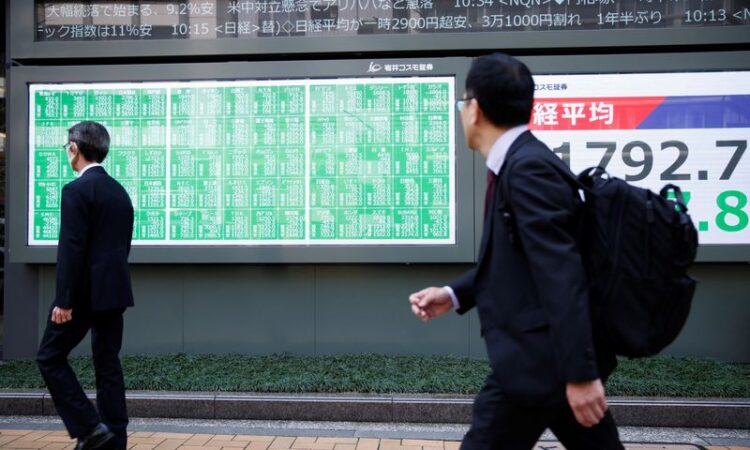
By Naomi Rovnick and Jaspreet Kalra
LONDON/SINGAPORE (Reuters) -Global stocks were subdued and the dollar was flat on Tuesday as market enthusiasm about Washington and Beijing extending their tariff truce to November was tempered by jitters about U.S. inflation data later in the day.
Asian equities rallied after U.S. President Donald Trump signed an executive order overnight pausing triple-digit levies on Chinese imports for another 90 days.
That propelled Tokyo’s exporter-heavy Nikkei to an all-time peak, while European stocks nudged higher, as Trump’s latest tariff climbdown allayed fears about China flooding non-U.S. markets with cheap goods to keep its factories humming.
But the upcoming U.S. CPI data was more important to the direction of markets, investors said, because it comes just after a surprisingly weak jobs report on August 1 and as businesses increasingly report inflationary pressures.
“If we see an inflation print that is above consensus that is going to make it very difficult for the Federal Reserve to cut interest rates,” Foresight Group fund manager Mayank Markanday said.
“We are probably going to see more data validating fears that (U.S.) stagflation is a key risk,” he added, referring to an economic scenario of slowing growth and rising inflation that has not been prevalent in the U.S. since the 1970s.
Investors are currently pricing in at least two rate cuts in 2025, adding to pressure on the dollar, which has also been weighed down by policy uncertainty and Trump’s personal attacks on Federal Reserve Chair Jerome Powell for keeping monetary policy tight.
Futures trading in New York signalled the S&P 500 share index and the tech-heavy Nasdaq 100, which are both near record highs thanks to rate cut bets and strong tech earnings, would trade steadily ahead of the CPI print.
CURRENCIES ON GUARD
A gauge tracking the dollar’s progress against major currencies including the euro and Japan’s yen traded flat on Tuesday, with sterling and the euro also little moved on the day.
The pound rose 0.4% against the Australian dollar, however, as traders anticipated the Bank of England lagging behind other non-U.S. central banks in implementing rate cuts.
The Reserve Bank of Australia cut its main cash rate by a quarter point to a two-year low of 3.60% on Tuesday.
Hours later, official UK labour data showed that British earnings growth was still running at 5%, two percentage points above the level economists view as consistent with the Bank of England’s inflation goal and despite an economic slowdown.




